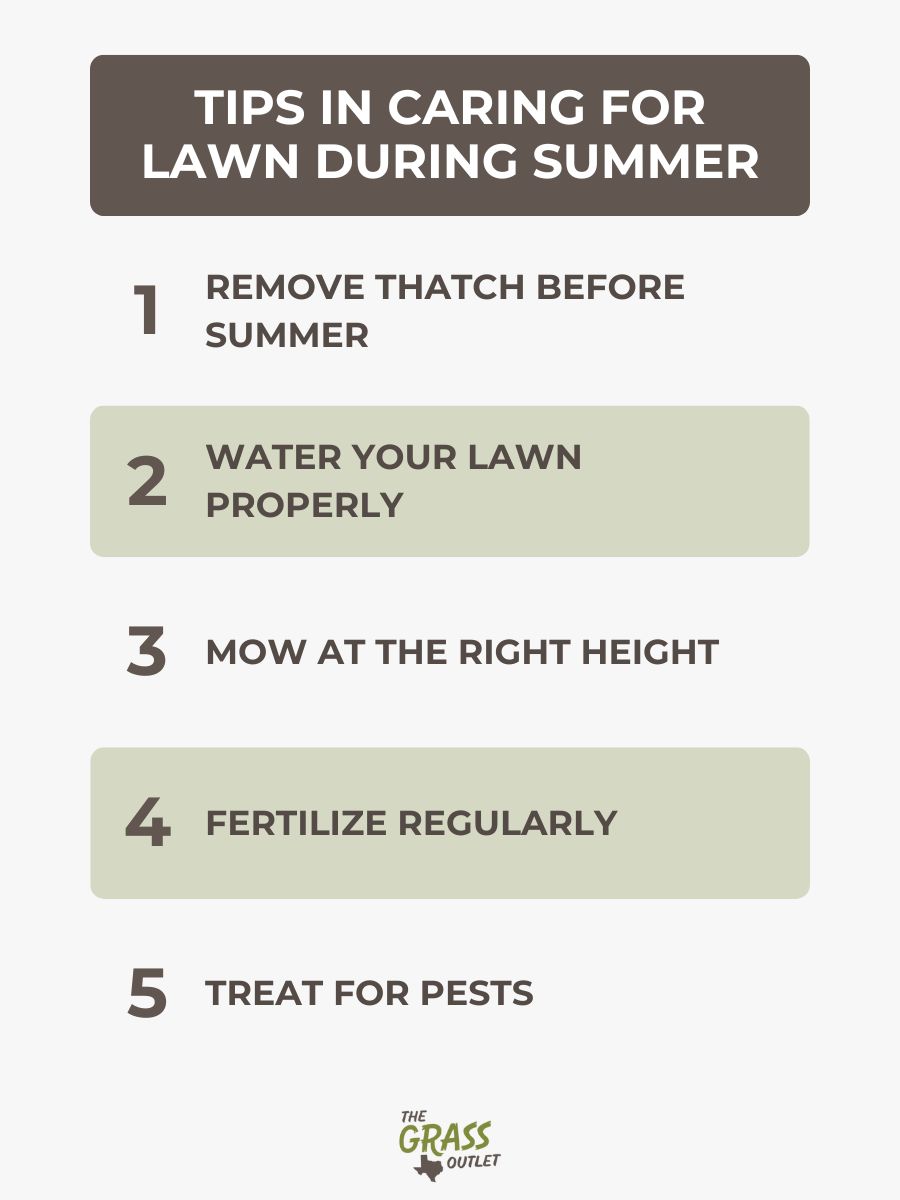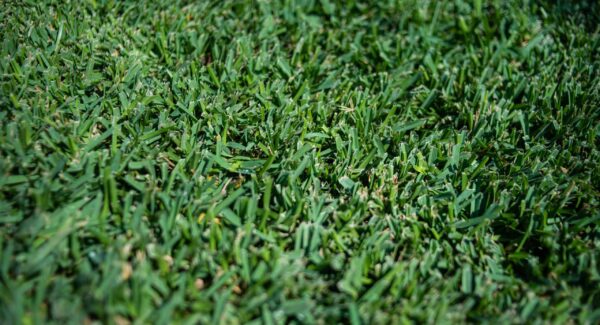How To Take Care Of Your Lawn During The Summer
Intense summer heat in Central Texas has the potential to damage lawns, especially if the grass is not properly cared for. Things like excessive or under watering, pests, over or under fertilizing, and mowing too low can result in grass becoming unsightly, and eventually dying, usually declining in patches. Luckily for Texans already suffering enough due to the summer heat, there are some things you can do throughout the summer to ensure your lawn is prepared and protected. In this post from The Grass Outlet blog, we’ll discuss some things you can do to take care of your lawn during the summer.

Remove Thatch Before Summer Rolls Around
Raking your lawn does more than just remove unsightly leaves. It can also assist in pulling up and removing excess thatch from your lawn. As dead plant matter decomposes, it piles up on the ground and forms into thatch. Thatch can prevent both sunlight and water from reaching the grass and roots, which results in dying grass. Ensuring that your lawn can get the nutrients it needs by removing thatch during the fall is a critical step to preparing your lawn for the summer months.
Properly Water Your Lawn
One of the most important things you can do to take care of your lawn in the summer is to ensure that it is properly watered. For the healthiest grass during the summer, you should water it deeply, infrequently, and only as needed. In most cases, you must give your lawn at least 1-1.5 inches of water weekly, especially during hotter summer months.
Homeowners in the Austin area can determine the right irrigation schedule for their lawn using the tips & tools within our Irrigation article. This video will assist in programming tradtional irrigation systems properly. Establishing an irrigation schedule is not only important for the health of your lawn but also to ensure that you’re within your city or town’s water restrictions. Homeowners living in Austin can use the City of Austin’s “Find Your Watering Day” tool to ensure they irrigate on the appropriate day. Homeowners living outside of Austin should be able to find the watering restrictions of their local municipality on their official website.
Mow To The Appropriate Height & Sharpen Your Mower Blades

Another problem that can come from mowing during the summer months is when you mow your lawn with dull mower blades. When you mow with a dull mower blade, you can tear grass, creating brown and ragged edges that create an opening for pathogens. Think of this as an open wound on a person. In general, a mower blade is good for up to 10 hours of mowing after being freshly sharpened. It’s a good idea to purchase a second mower blade so you’ll always have a sharp blade ready to go.
Regularly Fertilize Your Lawn
When it comes to keeping your lawn alive and healthy during the summer, fertilizing is another critical step in the process. Hot temperatures and dryness that come around each summer can result in dry grass, and fertilizing helps restore nutrients that have been lost as the grass dries. When a lawn is well fertilized, it will grow thicker, which cools the soil and helps your lawn handle the heat. Keep in mind that if the grass in your lawn becomes dormant, fertilization will not help. Rain and watering are one of the best ways to restore grass that has become dormant due to summer heat. Never apply nitrogen fertilizer to a drought stressed lawn, as you run a greater risk of burning the lawn.
Treat For Pests
Grubs are a common pest that Austin homeowners may find on their lawns throught the year, but especially during the summer. Spawned from the eggs of a number of different species of bugs and beetles, these worm-like insects can do a number on lawns by eating the grass which then results in unsightly brown spots. To naturally treat your lawn for grubs, plant native plants that these different species of bugs are more attracted to rather than the grass itself. Do your research on the kinds of grubs common in your area, and see what other homeowners are doing to naturally deter them away from your lawn.
In some cases of particularly bad grub infestation, treating your lawn with pesticides may be required. Find an extermination company that specializes in treating lawns, and see if they think pesticide treatment is necessary before agreeing to service. Certain pesticide treatments can damage your lawn more than the grubs ever could, so it may not be worth it in every situation.
Chinch bugs are another common pest during the summer. Chinch bugs can quickly destroy your lawn, so it is important to quickly identify the cause if you observe decling patches on your lawn. This troubleshooting guide will instruct you on inspecting your grass for pests, diseases, and other common isues so that the proper steps can be taken to restore your lawn.
Think Your Lawn Is Too Far Gone? The Grass Outlet Has You Covered!
If you think your grass has been permanently damaged by the summer heat, The Grass Outlet can help you replace as much or as little of your lawn as you’d like. Our Texas-based grass farm always has a wide selection of different types of grass available for purchase year-round. To see if your grass type is available, shop our grass varieties from our online store, or give us a call to learn more. We’re proud to be one of the top providers of grass sod in Austin and the rest of the state of Texas. At The Grass Outlet, we love helping Texas go green — one yard at a time!





